-
![img]()
Pharmacist Sheds Light on ADHD Treatment for Children
Zakwan Shah
April 09, 2025
8 min
ADHD, or Attention Deficit Hyperactivity Disorder, is one of the most common neurodivergent conditions among children.
With proper screening and medical intervention, this condition can be successfully managed at home. Nazatul Amira Hamzah, Pharmacist at Primabumi Sdn Bhd
Nazatul Amira Hamzah, Pharmacist at Primabumi Sdn Bhd
We had a chat with pharmacist Nazatul Amira Hamzah from Primabumi Sdn Bhd to find out more about ADHD in children and steps parents can take to address this condition.Question 1: What is ADHD and what are the symptoms?
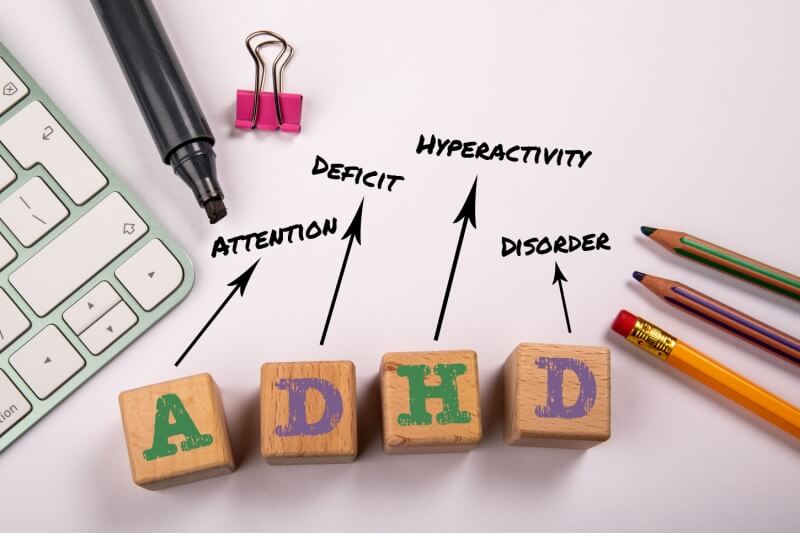
ADHD stands for attention-deficit/hyperactivity disorder.
A child with ADHD has differences in brain development and brain activity that cause them to persistently display symptoms of inattention, hyperactivity, and impulsivity.- Inattention: The child has difficulty paying attention, staying on task, or being organised
- Hyperactivity: The child tends to move, fidget, or talk constantly and excessively
- Impulsivity: The child often lacks self-control, leading to erroneous actions and behaviours
Question 2: Is ADHD common? How is it diagnosed?
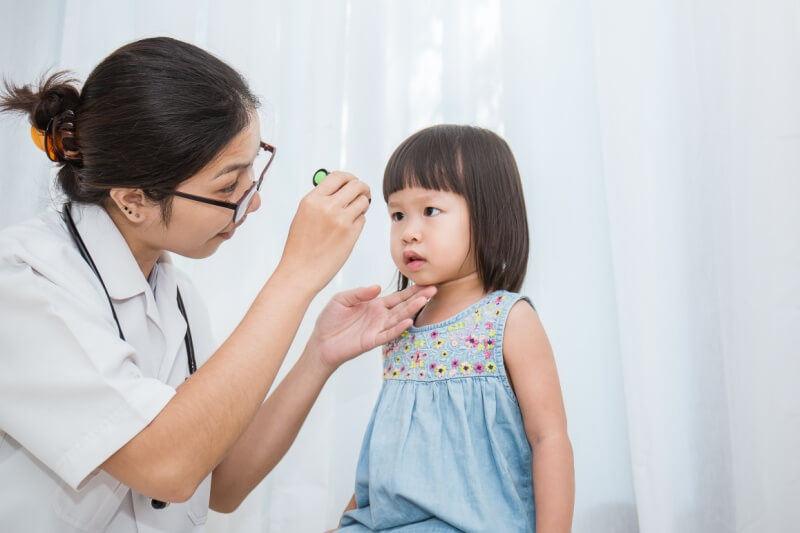
ADHD occurs in approximately 3 to 5 percent of Malaysian school-aged children.
ADHD is often first diagnosed before the age of 6 or 7 years old, when symptoms are most noticeable.
In addition, ADHD is more likely to occur in males and is more common in first-born children.
Diagnosis usually involves a full evaluation by a paediatrician, psychologist or psychiatrist, which may include interviews, surveys for parents and teachers, and behaviour analysis.Question 3: Will ADHD severely impact a child's development?

Children with ADHD experience significant problems in behavioural control, mood regulation, academic performance, and social interactions.
These often present real challenges not only to the children themselves but also to their parents, family members, caregivers, and educators.
Although many children with ADHD improve at some point, inattention may persist into adulthood.Question 4: What causes ADHD?

A child with ADHD tends to inherit the condition from their parents.
However, genetics is not the only factor.
Scientists discovered that children with ADHD have certain areas in their brains smaller or bigger than those of non-ADHD kids.
Additionally, ADHD children may have chemical signal imbalances in their brains.
A child may be more likely to develop ADHD if they:- were born prematurely, i.e. before the 37th week of pregnancy
- were born with low birth weight
- also suffer from epilepsy
- had a brain injury occurred either during pregnancy or later in life
Question 5: How is ADHD managed?

The management of ADHD in children encompasses three key areas:- Psychological education provided to the children, parents, caregivers, and teachers.
- Non-pharmacological (not involving medicines) therapies for the children, such as occupational therapy, organisational skills training, and cognitive behavioural therapy.
- Pharmacological treatments with medicines that are primarily categorised as stimulants and non-stimulants.
Depending on the symptoms and severity of a child’s ADHD, clinicians often combine two or more types of therapies for better outcomes.Question 6: At what age can children start taking medicines for ADHD?
Medicines for treatment of ADHD are prescribed mainly for children aged 6 years and above.
Currently, there is not enough data to support the use of these medicines in preschoolers (children below 6 years old).
If medication for ADHD is required in children in preschoolers, it should be initiated by a child psychiatrist or a paediatrician with expertise in managing ADHD.Question 7: What are the medication options for ADHD and how do they work?
The table below highlights the treatment options that are currently available in Malaysia.Category Medicine Mechanism of Action Possible Side Fffects Stimulant Methylphenidate It promotes the activity of certain areas in the brain that controls behaviour and attention. - Stomach upset
- Dizziness
- Headaches
- Difficulty sleeping
- Irritability, anxiety, depression and aggression
- Weight loss or poor weight gain due to decreased appetite
- A small increase in blood pressure and heart rate.
Non-stimulant Atomoxetine It increases the amount of noradrenaline in the brain. Noraderenaline is a chemical that can help improve concentration and control impulses. - Nausea and vomiting
- Stomach upset
- Difficulty sleeping
- Dizziness
- Headaches
- Irritability
- A small increase in blood pressure and heart rate
It is important to understand that medicines do not cure ADHD permanently.
However, they can assist children with ADHD in the following ways:- Focus better, especially at school.
- Have better self-control.
- Feel more relaxed and less anxious.
- Have a greater ability to adopt and apply new skills.
Clinicians often begin a child's treatment with low doses, gradually increasing them based on the child's response to the treatment.
Regular visits to the paediatrician or psychiatrist are crucial to ensure the treatment is working effectively and monitor for any signs of any side effects.Question 8: How long do children with ADHD need to be on their medications?

In general, children with ADHD need to continue their medications, as long as they help control their symptoms.
Many children outgrow their ADHD by the time they become teenagers and may no longer require medicines.
Parents must consult their children’s specialists at the right time to take their children off their medicine.Question 9: Are there any natural remedies for ADHD that parents can explore?
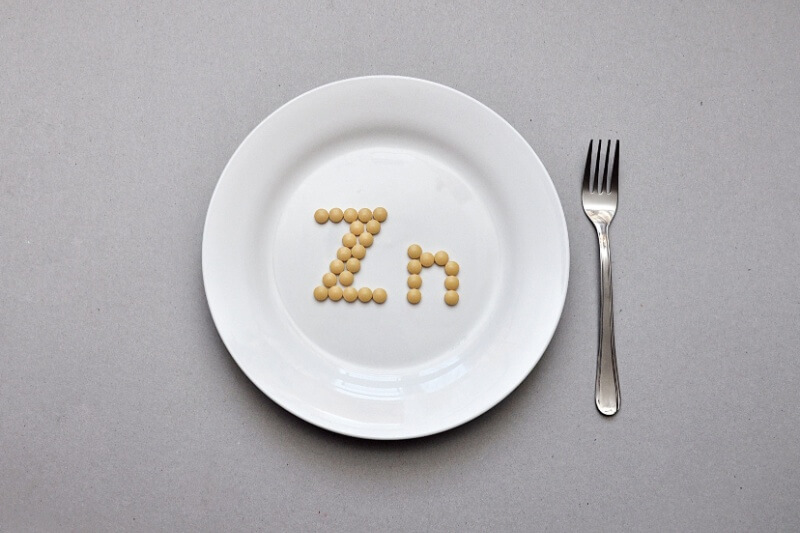
Zinc, iron, omega-3, vitamin C, and acetyl-L-carnitine are among the nutrients that were suggested to have potential positive effects in ADHD.
However, their roles in improving ADHD are still inconclusive, according to experts.
In addition, a growing number of clinical studies are being conducted to investigate the possible beneficial effects of certain probiotics, particularly from the families of Lactobacillus and Bifidobacterium, on ADHD symptoms.
Parents must consult the child’s doctor before starting their children on any dietary supplements.Question 10: How can parents support their children in managing their ADHD?

Parents play a critical role in providing the support their children need, and they can do this in a variety of ways.Pay attention to your child’s nutrition
Ensure your child gets a healthy, well-balanced diet rich in proteins, whole grains, fruits, and omega-3 fatty acids.
It is also important to limit their intake of processed and sugary foods or drinks.
Take note of and avoid any foods or beverages that may cause changes in your child’s behaviour.
Certain food additives, colourants, and flavourings have been found to worsen ADHD symptoms.Encourage physical activity
Exercise boosts dopamine and serotonin levels in the brain, improving attention and reducing hyperactivity and impulsivity.Ensure your child gets the medical attention they need
It's crucial to have regular follow-ups with your child's healthcare providers to assess the effectiveness of their treatment and make any necessary adjustments.Establish a routine
Consistent routines help children with ADHD understand what to expect and reduce impulsive behaviours.
Set regular times for meals, homework, bedtime, and other activities.
Visual schedules, such as charts or calendars, can also help them stay on top of their daily tasks and stay organised.Use positive reinforcement
Reinforce good behaviour with praise, rewards, and encouragement.
Parents should also promote activities that highlight their child’s abilities to help boost their self-esteem.Set clear expectations and boundaries
Be clear and specific about rules and expectations.
Giving the child one or two clear tasks at a time is more helpful than overwhelming them with long or complex instructions.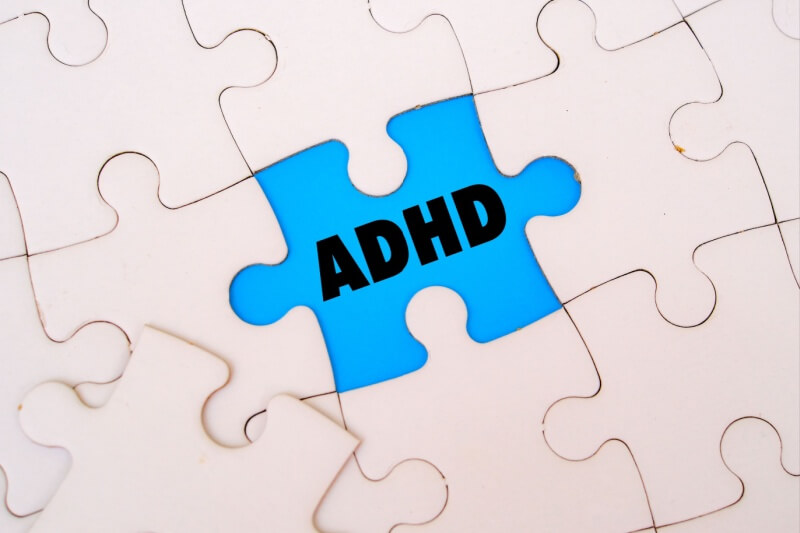
Practise calmness and consistent discipline
Maintain consistent consequences for bad behaviour, but emphasise teaching over punishing.
Use a gentle approach to reinforce learning and encourage better options.Teach time management and organisational skills
Help your child learn to manage time by setting timers for tasks, breaking assignments into smaller steps, and scheduling breaks.
Visual timers, time management apps, and simple organisational tools can help them stay focused.Use 'Stop and Think' techniques.
Practise role-playing situations where your child have to stop, think, and choose a response.
Over time, this technique can help them develop better self-control.Teach your child social skills
Help your child develop social skills by enrolling them in structured training, encouraging cooperative play, and modeling appropriate social behaviour.Stay involved with schools and teachers
Talk to the teachers about your child's progress, any challenges, and any learning methods that might help. Knowing what works for your child at school can help you use similar methods with them at home.Consider behavioural therapy
Behavioural therapy teaches strategies for managing ADHD symptoms and problematic behaviors.
Working with a therapist can help parents learn new methods and improve their responses, resulting in a more positive home environment.Create a supportive environment
Provide a space where your child feels safe, accepted, and understood.
Showing empathy and being patient can make them feel more confident and supported.Educate yourself, your child, and your family members about ADHD.
Learning about ADHD helps you to have a better understanding of your child’s needs.
Additionally, it enables you to provide better support to other family members and help them cope with challenges.
Source: Nazatul Amira Hamzah, Pharmacist at Primabumi Sdn Bhd
Disclaimer: The information provided in this article is for informational purposes only and should not be considered as medical advice from Motherhood. For any health-related concerns, it is advisable to consult with a qualified healthcare professional or medical practitioner.
For more insightful stories and fun recipes, stay tuned to Motherhood Story!
-
![img]()
Expert Sheds Light on Parents’ Guide to Immune Deficiencies in Children
Zakwan Shah
January 08, 2025
5 min
Immune deficiencies are conditions where the body's defence system is not able to fight off infections and diseases. It is often a serious lifelong struggle.
No parent wants to find out that their child has an immune deficiency, but it's important to help your little ones so that they can lead a long and happy life. Nazatul Amira Hamzah, Pharmacist at Primabumi Sdn Bhd
Nazatul Amira Hamzah, Pharmacist at Primabumi Sdn Bhd
We had a chat with Nazatul Amira Hamzah from Primabumi Sdn Bhd to find out more about immune deficiencies in children and steps parents can take to address this condition.Question 1: What are primary and secondary immune deficiencies?
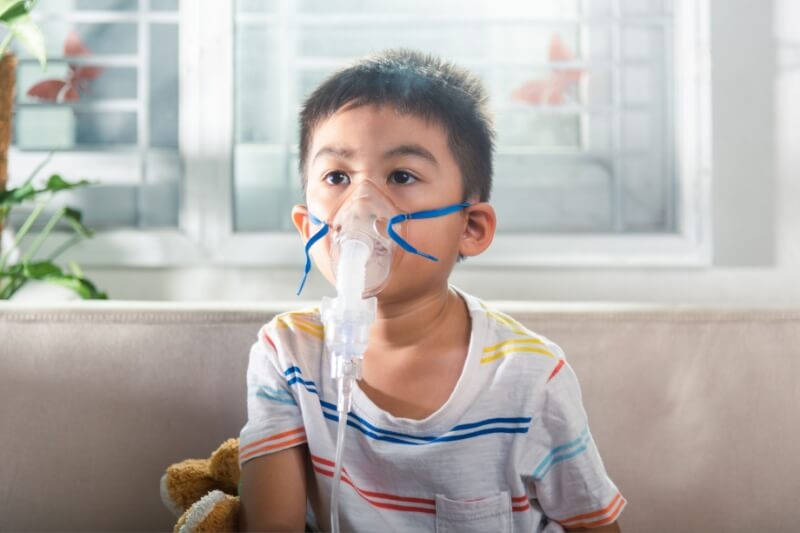
Immune deficiencies are health conditions in which a child’s immune system is impaired, compromising their ability to identify and eliminate infections.
They typically fall into two categories: primary and secondary immune deficiencies.
Some children may outgrow their deficiencies as their immune system matures, while others may have to deal with this issue lifelong.Question 2: What are the causes of primary and secondary immune deficiencies?
A child typically inherits a primary immune deficiency from one or both parents.
Someone can acquire immune deficiencies through ways other than genetic, such as:- Infections, like HIV, measles, or COVID-19
- Immunosuppressive drugs (medications used to suppress immune responses), such as: corticosteroids, chemotherapy agents, antirejection medication (for transplant patients).
- Medical conditions, such as: cancers, chronic kidney disease, burns, severe trauma, severe nutrient deficiencies
Question 3: How do I tell if my child may have an immune deficiency?
There are many ways that immune deficiencies can present themselves.
A child with this condition will usually suffer from slow growth, weight loss, skin rashes, delayed wound healing and excessive tiredness.
Frequent gastrointestinal issues such as abdominal cramping, nausea, vomiting, and diarrhoea can also be a sign.
Be on the lookout for frequent and recurrent infections as well such as pneumonia, bronchitis, sinus infections, ear infections, meningitis, or skin infections.
You should also observe your child for the following symptoms:- Enlarged lymph glands or spleen
- Failure to thrive and/or persistent candidiasis (oral thrush) in newborns
- Inflammation and infection of internal organs
- Opportunistic infections (infections occurring due to bacteria, fungi, viruses, or parasites that normally do not cause a disease but become capable of causing illnesses when the body's immune system is weakened)
- Infections that are difficult to treat that they require several treatment courses or frequent hospitalisations
However, the symptoms above could also be caused by other health issues such as anaemia, nutrient deficiency, or hormonal imbalance.
A professional medication examination is required to determine the correct diagnosis.Question 4: How is an immune deficiency diagnosed?

Your child's doctor may perform the following tests to determine whether or not your child has an immune deficiency:- A blood test is carried out to assess the levels of infection-fighting proteins (immunoglobulins), antibodies, blood cells, and immune system cells in your child’s blood.
- Prenatal testing involves testing samples of the mother's amniotic fluid, blood, or cells from the tissue that will form the placenta (chorion) to identify any immune-related problems.
- DNA testing is used to check for a genetic defect during pregnancy. Test results enable the timely preparation for therapy immediately following birth, if required.
Question 5: At what age are primary and secondary immune deficiencies detected?

Primary immune deficiencies often manifest early in life, whereas secondary immune deficiencies can appear at any stage, depending on their triggers.Question 6: How does an immunodeficiency affect a child’s health and quality of life?
Immune deficiencies impair your child’s immune system’s ability to identify and eliminate threats.
They negatively affect your child’s health and well-being by increasing your child’s likelihood of:- Suffering from multiple allergies as well as serious illness and infection
- Experiencing recurrent or long-term infections
- Having a reduced ability to absorb and utlise nutrients
- Requiring frequent medical visits and hospitalisations that could impact their academic performance and decrease their opportunity for learning and social activities.
Question 7: How are primary and secondary immune deficiencies treated?

Treatments for both primary and secondary immunodeficiencies primarily involve:- Treating and preventing infections through the use of antibiotics, antivirals, and antifungal medications.
- Treating and preventing infections through the use of immunoglobulin replacement therapy (IVIG) to supplement missing antibodies.
- Stem cell transplantation to cure several forms of life-threatening immunodeficiency.
Question 8: What is the role of vaccination in managing primary and secondary immune deficiencies?

Vaccines can help protect your child against common infections in the short- and long-term.
However, children with severe immune deficiencies should avoid live vaccines like oral polio and measles-mumps-rubella unless a specialist recommends them.Question 9: Can probiotics help children with immune disorders?

Probiotics may help improve gut health and strengthen the immune system.
However, there are insufficient clinical studies to prove that probiotics can be significantly beneficial in children with immune deficiencies.
Talk to a healthcare professional before starting your child on any probiotic product.Question 10: As a parent, how do I help my child cope with their immune deficiencies?

Parents can help support their child’s overall immune function through various measures, including:- Encourage your child to practice good hand and dental hygiene.
- Promote a well-balanced diet to ensure your child gets all the nutrients they need to grow healthily.
- Ensure your child gets enough sleep, help them manage stress, and encourage them to stay physically active, as all these are necessary to maintain strong immune function.
- Minimise your child’s exposure to infection as much as possible by staying away from people with symptoms of infection or crowded places.
- Consult your doctor about recommended vaccinations for your child.
Source: Nazatul Amira Hamzah, Pharmacist at Primabumi Sdn Bhd
Disclaimer: The information provided in this article is for informational purposes only and should not be considered as medical advice from Motherhood. For any health-related concerns, it is advisable to consult with a qualified healthcare professional or medical practitioner.
For more insightful stories and fun recipes, stay tuned to Motherhood Story!
-
![img]()
What to Do When Your Child Refuses to Eat—Expert Tips for Parents
Zakwan Shah
February 19, 2025
5 min
Kids need lots of food to ensure they grow up fast and strong.
Good and healthy nutrition is essential during the early years of life.
But what happens when your child does not have much appetite? Nazatul Amira Hamzah, Pharmacist at Primabumi Sdn Bhd
Nazatul Amira Hamzah, Pharmacist at Primabumi Sdn Bhd
We had a chat with pharmacist Nazatul Amira Hamzah, to help parents learn more about what they can do when their kids are just not in the mood to eat.Q1: What are some common causes of children's low appetite?

The following list outlines potential causes of your child's poor appetite:- Children frequently have a decreased appetite at times of minor illness or discomfort. These may include colds, gastrointestinal problems, or teething pain.
- Excessive pressure from parents or caregivers inhibits children from enjoying their meals, leading to a distaste of specific foods.
- Many young children suffer from neophobia, a fear of trying new foods, and their parents often perceive them as fussy eaters.
- Too much intake of sugary foods and beverages can reduce a child’s appetite for nutrient-dense meals.
- In some children, refusal to eat may be an attention-seeking behaviour which indicates a problem in the parent-child relationship.
- Distractions at mealtime, as well as an emphasis on mealtime behaviours and table manners that are improper for the child's age, create a hostile environment and discourage children from eating.
- Stress caused by problems at home or school could impair children's appetite.
- Certain diseases and medications can disrupt children's normal bowel function in children, suppressing their appetite directly or indirectly.
Q2: How can parents tell the difference between regular appetite swings and more serious appetite issues?
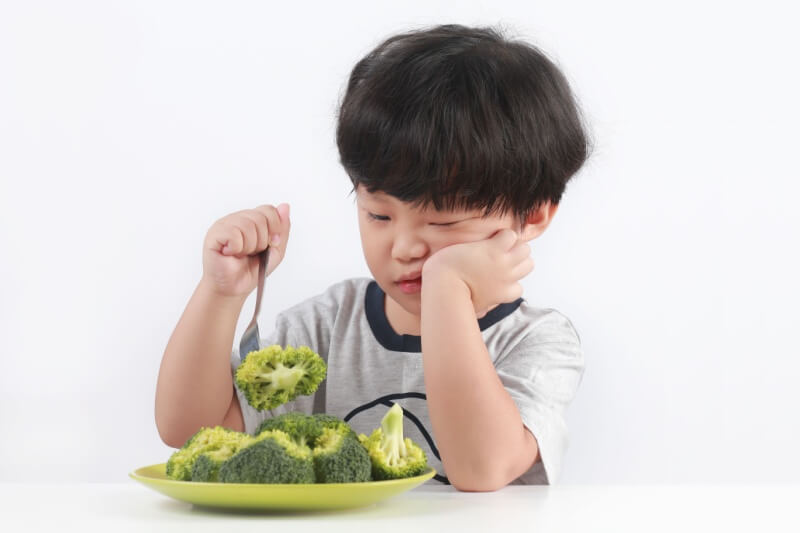
Occasional appetite changes are common, particularly during growth spurts or following illness.
However, if the child experiences consistent weight loss, fatigue, or a lack of energy over a long period of time, this may suggest an underlying problem that requires medical attention.Q3: How can underlying health conditions that may cause a child's reduced appetite be identified?

A doctor should examine your child and obtain a full history of their eating habits, including normal portion sizes, time taken to complete a typical meal, and mealtime environment.
Certain lab tests may also be necessary to diagnose anaemia and vitamin deficiencies.
If your child shows no signs of underlying illnesses, enjoys most of their meals, and grows healthy, the problem is usually due to parents' unreasonable expectations.Q4: What medical conditions are commonly linked to reduced appetite in kids?

Health issues that can cause poor appetite in children include anaemia, hypothyroidism, chronic infections, and gastrointestinal problems.
Psychological disorders such as anxiety and depression may also play a role.Q5: Can low appetite in children be a sign of an underlying nutrient deficiency?
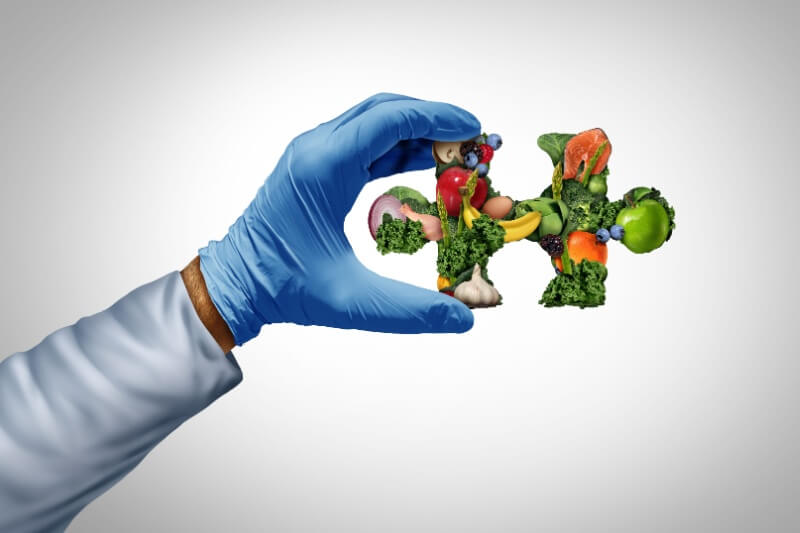
Yes, poor appetite can indicate underlying deficiencies in nutrients like iron, zinc or vitamins, which affect overall energy and health.
Your paediatrician may recommend tests and appropriate supplements if a deficiency is suspected.Q6: What are some examples of medicines that may interfere with appetite?
Antibiotics, medicines to treat attention deficit hyperactivity disorder (ADHD), and some antidepressants can all suppress appetite.
If this happens, you should discuss with your child’s doctor if a dosage adjustment is required or if taking the medicines with food would be helpful to minimise the drug’s side effect on appetite.Q7: Are there any common dietary habits or patterns that may be related to a child's poor appetite?

Your child is more likely to experience low appetite if they skip breakfast, continue to snack on junk food, or consume excessive amounts of liquids before meals, such as milk or juice.Q8: Are there specific food groups or nutrients that can naturally stimulate appetite in children?

Protein-rich foods (like chicken or beans), complex carbohydrates (such as whole grains), and healthy fats (e.g., nuts, seeds and oils) can increase energy and stimulate appetite.Q9: Are there over-the-counter supplements or vitamins that can help improve my child’s appetite?
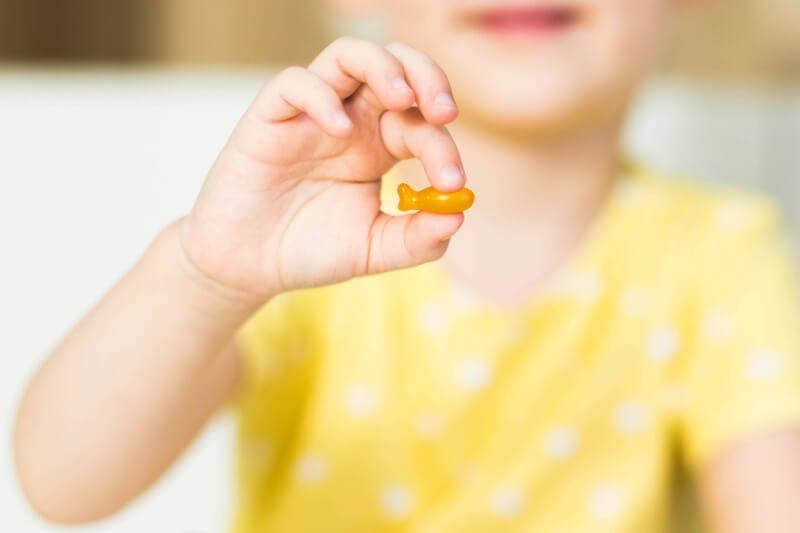
You may consider the following options to help boost your child's appetite, under the guidance of your healthcare provider:- Multivitamins containing B-complex vitamins, iron, zinc, and lysine. Lysine is an essential amino acid that promotes appetite and satiety.
- Probiotics containing strains like Lactobacillus or Bifidobacterium may help promote children’s gut health and thereby improve their appetite.
- Digestive enzymes improve your child’s ability to process certain foods.
Q10: How can parents increase their child's appetite and make a healthy food plan for them?

Addressing your child’s low appetite requires a holistic approach and long-term nutrition strategies:- Choose nutritious food of appropriate texture and taste for the child’s age, and provide structured meals and snacks. As long as they grow appropriately, you should allow your child to decide how much and what they eat.
- Offer smaller, more frequent meals, with a focus on nutrient-dense foods such as avocados, eggs, and cheese, smoothies, and fortified cereals. You can always add more if your child eats everything on their plate.
- Help your child accept new foods by gradually introducing them over time and providing regular, neutral exposures.
- Limit your child's time at the table to about 20 minutes. Once mealtime is over, remove all food and serve it again at the next planned meal or snack.
- Serve nutritious snacks in between meals. However, do not give your child snacks if the timing or amount would interfere with their appetite for the following meal.
- Encourage your child to play and exercise to stimulate appetite. However, you should allow them to settle down 10-15 mins before mealtimes to ensure they are not too tired or overstimulated.
- Do not force or coax your kid to eat. Bribes, threats and punishments do not help in healthy eating.
- Do not allow any potential distractions such as toys, books or electronic devices at the table during mealtimes.
- Make mealtimes as something that your child looks forward to by creating a calm, supportive environment.
- Encourage your family members to eat together whenever possible. Eating with the family provides the toddler with a pleasurable social experience and the opportunity to learn by imitation.
- If malnutrition is a concern, you should consult with your pediatrician to see if giving your child a meal replacement designed for kids is appropriate and which product would be best for them.
Source: Nazatul Amira Hamzah, Pharmacist at Primabumi Sdn Bhd
Disclaimer: The information provided in this article is for informational purposes only and should not be considered as medical advice from Motherhood. For any health-related concerns, it is advisable to consult with a qualified healthcare professional or medical practitioner.
For more insightful stories and fun recipes, stay tuned to Motherhood Story!
-
![img]()
Pharmacist Explains: How Antibiotics Affect Your Child's Gut Health
Zakwan Shah
March 19, 2025
4 min
Antibiotics are important for dealing with deadly infections. Throughout your little one's life, their doctor will prescribe them all kinds of antibiotics.
But are there any long-term side effects of this medication on your child's gut health? Nazatul Amira Hamzah, Pharmacist at Primabumi Sdn Bhd
Nazatul Amira Hamzah, Pharmacist at Primabumi Sdn Bhd
To learn the truth, we sat down with pharmacist Nazatul Amira Hamzah.
Nazatul has over a decade of experience in pharmacy and healthcare.Q1: How do antibiotics work in treating bacterial infections in children?

Antibiotics are medications formulated to kill or inhibit the growth of bacteria that cause infections.
By eliminating harmful bacteria, antibiotics help the body recover from illness.Q2: What is the gut microbiome, and why is it important for my child’s health?
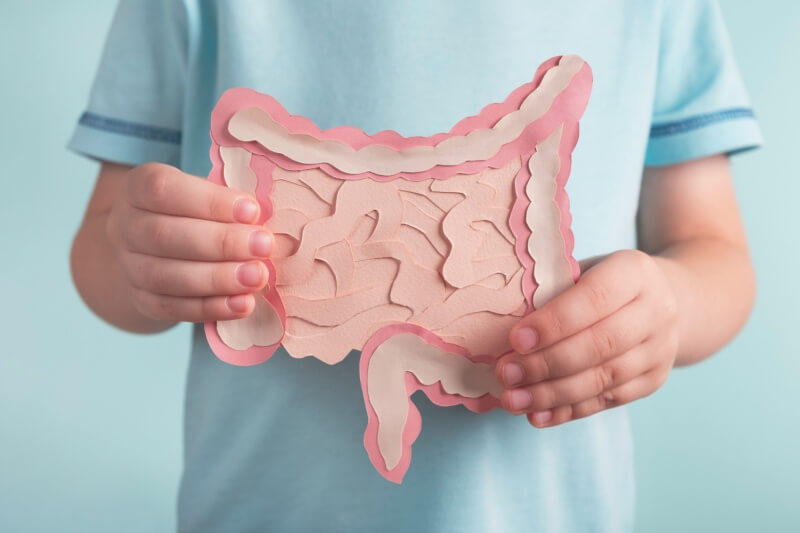
The gut microbiome is the trillions of microorganisms found in the digestive tract, including bacteria, fungi, viruses, and other microbes.
In children, the microbiome influences digestion, immune system development, metabolism, and even mental health.
It also protects against infections, enhances nutrient absorption, and promotes general health.Q3: What role does the gut microbiome play in my child's immune system?
The gut microbiome helps your child’s immune system to distinguish between safe and harmful substances.
It also boosts the production of immune cells and helps prevent the overgrowth of unwanted bacteria.Q4: What are the impacts of antibiotic use on the gut microbiome in children?
Antibiotics frequently wipe out both dangerous and beneficial microorganisms in the gut.
This disruption can cause an imbalance in the microbiome diversity and allow dangerous bacteria or yeast to flourish, potentially harming digestion and immune function.
Children, particularly newborns, are especially vulnerable to antibiotic adverse effects because their microbiome is less established and more sensitive than that of adults.Q5: What symptoms might indicate that antibiotics are negatively affecting my child's gut?

Your child may experience symptoms such as diarrhoea, bloating, stomach pain, nausea, and changes in stool consistency due to an imbalance in their gut microbiome.Q6: How does antibiotic overuse or misuse affect my child’s gut health?
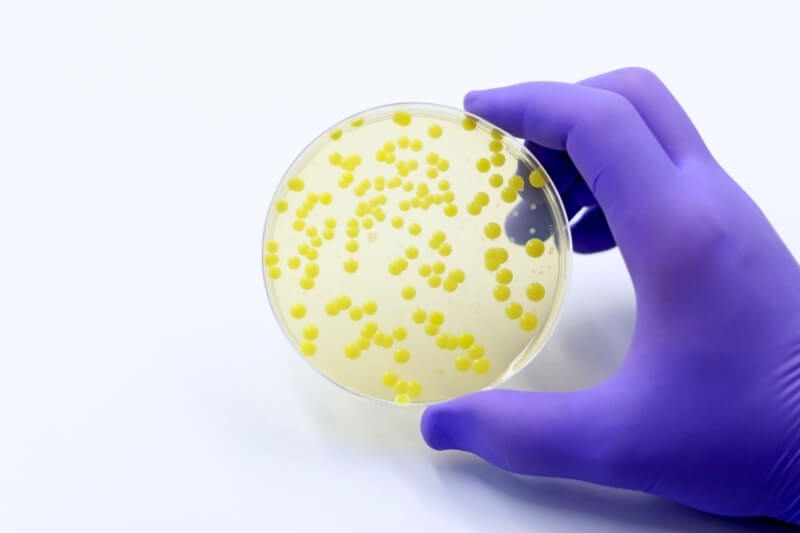
Unnecessary or prolonged use of antibiotics, especially at a young age, can result in reduced gut microbiome diversity.
This may cause your child to develop chronic (long-term) issues, including food intolerances, allergies, obesity, or immune disorders.
Antibiotic overuse can diminish your child's beneficial bacteria and cause the growth of antibiotic-resistant bacteria.
Antibiotic resistance occurs when bacteria evolve and become immune to the actions of antibiotics, making infections more difficult to treat.
Misuse, such as the use of antibiotics for viral illnesses, can alter the gut microbiome and lead to long-term health issues.Q7: Are certain antibiotics more likely to cause gut imbalance in children?

Broad-spectrum antibiotics, such as amoxicillin or clindamycin, are more likely to disturb the gut microbiome since they act on a wide range of bacteria, including beneficial ones.
Narrow-spectrum antibiotics, which target specific bacteria, may have a lesser impact.
Your healthcare professional will carefully consider the benefits and risks of antibiotics before giving them to your child.Q8: How can I help restore my child's gut microbiome after antibiotic treatment?
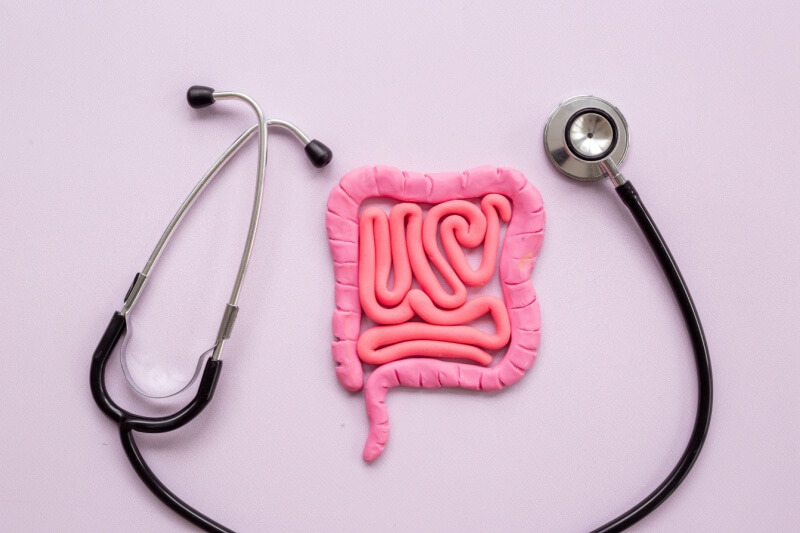
You can help your child's gut recover faster from the side effects of antibiotics by including probiotic-rich foods.
This includes yogurt, kefir, miso or supplements.
You can also encourage the intake of foods that are high in fibre and prebiotics. For example, fruits, vegetables, and whole grains.
Additionally, you must discuss any concerns with your healthcare provider and avoid unnecessary antibiotic use.Q9: What are prebiotics and probiotics, and what role do they play in mitigating the effects of antibiotics on gut health?

Prebiotics are non-digestible fibers that promote the growth of healthy gut bacteria.
Probiotics are live bacteria that can provide health benefits when taken in sufficient amounts.
Both prebiotics and probiotics help restore balance to the gut microbiome following antibiotic treatment, reducing the incidence of antibiotic-related side effects.Q10: How long may it take for my child's gut microbiome to recover after completing their course of antibiotics?

Generally, it may take a few weeks to several months for the gut microbiome to restore its balance, depending on your child's health, diet, and the type and duration of the antibiotic treatment.
Vaccination, proper hygiene, and a healthy diet can help protect your child against infections, thereby minimising their need for antibiotics.
Source: Nazatul Amira Hamzah, Pharmacist at Primabumi Sdn Bhd
Disclaimer: The information provided in this article is for informational purposes only and should not be considered as medical advice from Motherhood. For any health-related concerns, it is advisable to consult with a qualified healthcare professional or medical practitioner.
For more insightful stories and fun recipes, stay tuned to Motherhood Story!
-
![img]()
The Hidden Danger: How to Spot Red Flags in Trusted Adults Around Your Children
Eisya Ereena
December 27, 2024
4 min
You know those moments when your little one is running around in endless circles, giggling away, and your heart feels like it could burst with love?
But then, a notification pops up, and suddenly you’re reading yet another horrifying news story about a child being hurt or abused.
Before you know it, your mind spirals: What if it happened to my child? How would I cope?
As a work-from-home mummy, these thoughts creep in more often than I’d like to admit, especially on days when deadlines pile up, and I feel like I haven’t spent enough time with my kids.
And, of course, there’s always the lingering questions: Should I send them to a care centre? Would they be safe there?
But deep down, I know one thing for certain: there’s nothing more precious or sacred than my children’s safety.
Knowing I can protect them while being physically present gives me peace of mind.
So, here I am, typing this out while my little ones are just a room away—and the thought of leaving them somewhere else feels unsettling.
That said, I also know that not every family has the same circumstances.
Being able to work from home and keep an eye on my kids is a privilege I don’t take for granted.
For some families, the 'village' that helps raise a child includes teachers, caregivers, and trusted friends.
And most of the time, these amazing people step up, nurturing and guiding our kids as if they were their own.
But then, those distressing news stories remind us of a hard truth: not everyone is who they seem to be.
And as parents, it’s on us to strike a balance between trusting others and staying vigilant.
It’s not about living in fear but about creating an environment where our kids feel safe, heard, and loved.
For all of us navigating parenting, let’s talk about how we can recognise red flags in trusted adults, build open communication with our kids, and stay proactive about their safety, because every child deserves that.When Trust Is Betrayed

The hard truth is that even those we rely on to guide and nurture our children, like teachers, therapists, or coaches can sometimes misuse their authority and harm the very kids they’re meant to protect.
This isn’t an issue unique to Malaysia.
It’s a heartbreaking reality across the globe, with far too many stories of abuse by trusted adults making headlines.
The key takeaway here isn’t to instil fear but to encourage vigilance.Teaching Awareness, Not Fear

Our goal as parents isn’t to make our children mistrustful of everyone.
We instead should equip them with the tools they need to recognise and respond to unsafe situations.
Start by introducing body autonomy concepts early, using simple, age-appropriate language.
Let your child know that their body belongs to them and that it’s always okay to tell you if someone makes them feel uneasy or uncomfortable.
For younger kids, teaching ideas like 'safe touch' and 'unsafe touch' can help build a foundation.
As they grow, these lessons can expand into more complex discussions about personal boundaries, consent, and the importance of speaking up.
Empowering our kids with knowledge, while fostering open communication, is how we guide them to navigate the world with confidence and safety.Recognising Red Flags in Adults

Most predators don’t act like the stereotypical villains we see in movies.
They’re often charming, friendly, and eager to gain your trust.
Here are some behaviours to watch out for:- Excessive Attention: If an adult is overly focused on your child, constantly offering gifts or wanting to spend time alone with them, it’s worth paying closer attention.
- Boundary Pushing: Someone who disregards your family’s rules or boundaries, like as simple as making inappropriate jokes can be a red flag.
- Secrecy: If an adult encourages your child to keep secrets, it’s a warning sign. Open communication between parent and child is key to catching this early.
However, there may be instances where there are no red flags.
This is when its most important to establish a system where our children trust us to protect them.Open Channels of Communication

One of the best ways to protect your child is by fostering an environment where they feel comfortable sharing anything with you.
It’s important not to give the impression, even unintentionally, that your work or other commitments take precedence over their wellbeing.
If possible, try and avoid framing your child's time at a daycare or with caregivers as something you rely on for your convenience.
Instead, emphasise that their experiences matter deeply to you.
Make it clear that their safety, happiness, and emotional wellbeing are always your priority and ask open ended questions like, “How was your day?” or “Did anything make you feel upset or uneasy?”
Note to self: As parents, our reactions are just as important.
If your child confides in you, remain calm and supportive, even if the topic is upsetting.
Your response sets the tone for whether they’ll come to you again in the future.Trust and Verify

It’s easy to assume that institutions like hospital, clinics, schools, daycare centres, or extracurricular clubs have rigorous systems in place to vet employees.
While most do, it’s still important to do your own due diligence.- Ask Questions: Don’t hesitate to ask about background checks, training programmes, and how the organisation handles complaints.
- Stay Involved: Be present in your child’s life. Attend school events, get to know their teachers, and establish relationships with other parents.
- Monitor Changes: If your child’s behaviour shifts dramatically - becoming withdrawn, anxious, or fearful, it could be a sign that something’s wrong.
Protecting Their Childhood without Smothering It

The balance between vigilance and trust is a delicate one.
We want our children to experience the world, build relationships, and grow into confident adults.
But we also have a responsibility to safeguard their innocence.
Empowering them with the knowledge to recognise inappropriate behaviour is key.
Last but not least, as a parent myself, I know how easy it is to get swept up in worry.
But our role isn’t to shield them from every potential danger.
It’s to prepare them to navigate the world safely and confidently.
By staying informed and proactive, we can create a safer environment for our little ones to thrive.
Disclaimer: The information provided in this article is for informational purposes only and should not be considered as medical advice from Motherhood. For any health-related concerns, it is advisable to consult with a qualified healthcare professional or medical practitioner.
For more insightful stories and fun recipes, stay tuned to Motherhood Story!
Navigation
Our menu boxes are very flexible and easy to use




